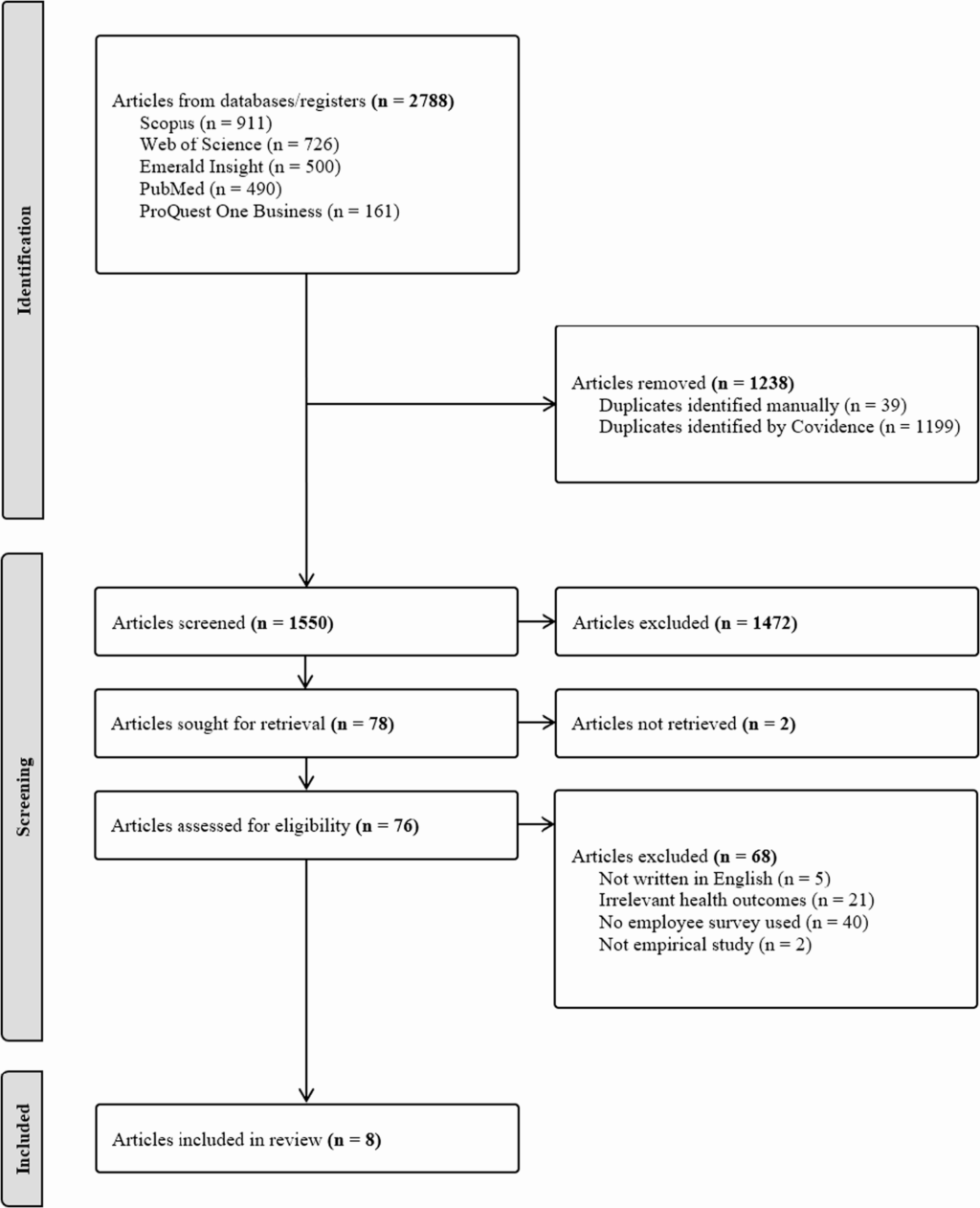
In an era where workplace wellness is increasingly prioritized, a recent scoping review sheds light on the pivotal role of employee surveys in promoting physical health and healthy lifestyles among employees. Conducted in accordance with the Preferred Reporting Items for Systematic Reviews and Meta-Analysis Extension for Scoping Reviews (PRISMA-ScR), the review explores how employee surveys can be a tool for health promotion in organizational settings.
The review, which adhered to the methodologies of H Arksey and L O’Malley, aimed to assess the scope of employee surveys in fostering health and wellness. It focused on employees as the population, physical health and lifestyle as the concept, and employee surveys as the context. This comprehensive analysis offers insights into the use of surveys to monitor and enhance employee health, with a particular emphasis on the last decade’s peer-reviewed empirical studies.
Eligibility and Methodology
The review set stringent eligibility criteria, focusing on research articles that investigated employees’ physical health or lifestyle factors such as obesity, stress, exercise, and diet. Only studies utilizing data from employee surveys conducted by organizations or external consultancies were included. The review spanned various industries and was limited to English-language articles published between 2014 and 2024.
Information was sourced from databases like ProQuest One Business, Emerald Insight, and PubMed, with the search strategy meticulously developed in collaboration with librarians. A rigorous screening process using Covidence ensured the relevance of the articles, resulting in eight studies that met the inclusion criteria.
Insights from the Review
The studies analyzed originated from diverse countries, including Germany, the USA, and Australia, and employed various research designs, from cross-sectional to longitudinal studies. The participant demographics varied widely, with ages ranging from 15 to over 60 years.
Employee surveys were primarily used to explore the relationship between work-related factors and health outcomes. For instance, one study reported that organizational factors like job control and co-worker support were linked to musculoskeletal disorders, while another found that a health initiative significantly reduced physical inactivity among employees.
Health Outcomes and Survey Effectiveness
The review highlighted the diverse health and lifestyle aspects assessed through surveys, such as physical activity, BMI, psychological wellbeing, and social support. Notably, employee surveys were used to evaluate health-promoting initiatives, demonstrating their potential as tools for workplace health management.
“The initiative reduced the level of physical inactivity from 25.3% to 16.1% among Veterans Health Administration employees,” one study noted, showcasing the tangible benefits of targeted health programs.
However, the review also pointed out the underutilization of theoretical frameworks in survey design, suggesting a need for more structured approaches to drive behavior change and improve health outcomes.
Challenges and Future Directions
Despite the promising role of employee surveys, the review identified several challenges, such as negative attitudes towards surveys, response biases, and difficulties in interpreting results. Addressing these issues requires careful planning and possibly involving third parties to ensure anonymity and encourage honest responses.
The review calls for future research to integrate theoretical frameworks like the Social Ecological Model and the Behavior Change Wheel to enhance survey effectiveness. Additionally, it emphasizes the importance of ethical considerations in survey design, particularly concerning privacy and the potential stigmatization of unhealthy behaviors.
Implications for Organizations
Employee surveys offer a strategic advantage in promoting workplace health, aligning with the new Corporate Sustainability Reporting Directive in the European Union. By incorporating health-related questions, organizations can not only improve employee wellbeing but also enhance their sustainability reporting.
However, the review underscores the necessity for organizations to follow up on survey results with actionable plans. Effective communication of these plans can increase employee participation and trust in the survey process, ultimately leading to a healthier workplace environment.
Conclusion
The scoping review highlights a significant knowledge gap in the use of employee surveys for health promotion. It advocates for more research to determine the most effective survey dimensions and interventions that can lead to lasting improvements in employee health and lifestyle.
As organizations navigate the complexities of workplace health, employee surveys emerge as a valuable tool for identifying issues, evaluating interventions, and fostering a culture of wellness. With strategic enhancements and ethical considerations, these surveys can play a crucial role in shaping healthier, more productive workplaces.





